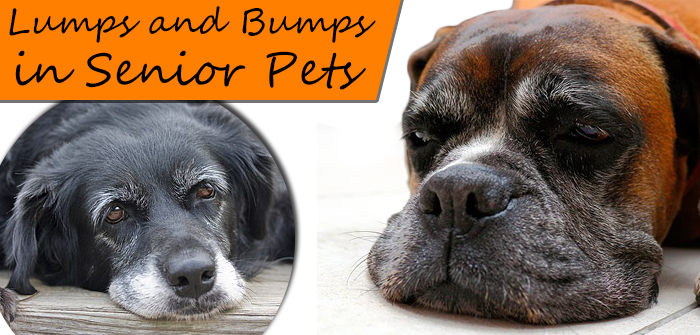Learn More about Skin Lumps and Bumps on Dogs

While grooming sometimes you may come across those lumps and bumps on your pet’s body. Due to different reasons, swelling may come up. It can be due to fluid-buildup, bruising, abscess or due to flea or tick bite, nevertheless with little first aid care and preventive measures, it may wary away with time.
This does not stand right in all cases, at times, your pet may have an unbearable pain and the lump may seem unusual. Never sit back in such cases. For such skin lumps, take your pet to a veterinarian. This confirms your peace of mind and your pet’s health. Diagnosing your furry pal, veterinarian can decide what type of lump is troubling your pet.
Normally, there are two types of skin lumps found on dogs’ body.
Non-Cancerous Lumps
Different types of lumps are seen in older dogs, which are classified, as non-cancerous lumps. Some of them are warts, cysts, infected hair follicles, hematomas (blood blisters), sebaceous hyperkeratosis (which looks like raised pink pimples of different sizes). Though lump may not be cancerous, it can still cause pain and discomfort to your dog. If these lumps are not cured by medications, they have to be removed.
Cancerous Lumps
Cancerous lumps are found in two types. One is benign and the other is malignant.
Benign
These types of lumps grow bigger but do not spread to any other part of the body. When these tumors grow continuously, their growth cause problem such as restricting movement, interrupting normal functioning of the other parts of the organ or difficulty in breathing due to the size of the lump.
Malignant
Malignant tumors are quite dangerous as these are aggressive which grow very fast and spread to different parts of the body. These tumors can spread through lungs and liver and prove to be fatal. It is important to remove malignant tumor before it starts spreading to different parts of the body.
Common types of malignant lumps are basal cell tumors, Mast cell tumors and melanomas.
Diagnosis
While grooming or caressing your dog, if you find any lump on his body, you should bring this to the notice of your vet. Be ready to answer a few questions, which your vet may ask you. A medical history will able to help your vet to devise the right treatment for your furry pal.
Certain questions that your vet may ask you:
- How long has the lump been there on your pet?
- Does the lump bother your pet intensely?
- Was your dog itching or scratching?
- Does it seem painful or tender?
- Has your pet been continuously licking or chewing at it?
- How old is your pet? (as older pets are more prone to cancerous tumors)
Considering the location of the lump, your vet will be able to get clues about what kind of lump it is.
According to the lump, your vet will conduct a procedure called a Fine Needle Aspirate. In this procedure, a needle will be stuck inside the lump and a small material from the lump will be obtained through syringe. This material will be placed on the slide and is evaluated under the microscope.
If necessary, your vet will recommend biopsy of the lump. This involves removing a portion from the lump and sending it to a pathologist for examination. On seeing the severity, your vet may remove the entire lump through surgery and send it for evaluation for proper treatment.
Treatment
Depending on the type of the lump your dog has, your vet will decide the treatment to be given. It’s not necessary that all lumps can turn out to be tumors, many lumps cannot be dangerous and can be left. If the lump seems to be problematic, then it is removed followed by a treatment with chemotherapy or radiation as a treatment option, in case it’s a malignant tumor.
If you have senior dogs, ensure that you check his body from head to tail for the presence of any of type of lump. If you find a lump, – just take an appointment with your vet. He will ensure what type of lump your pet is suffering from.

